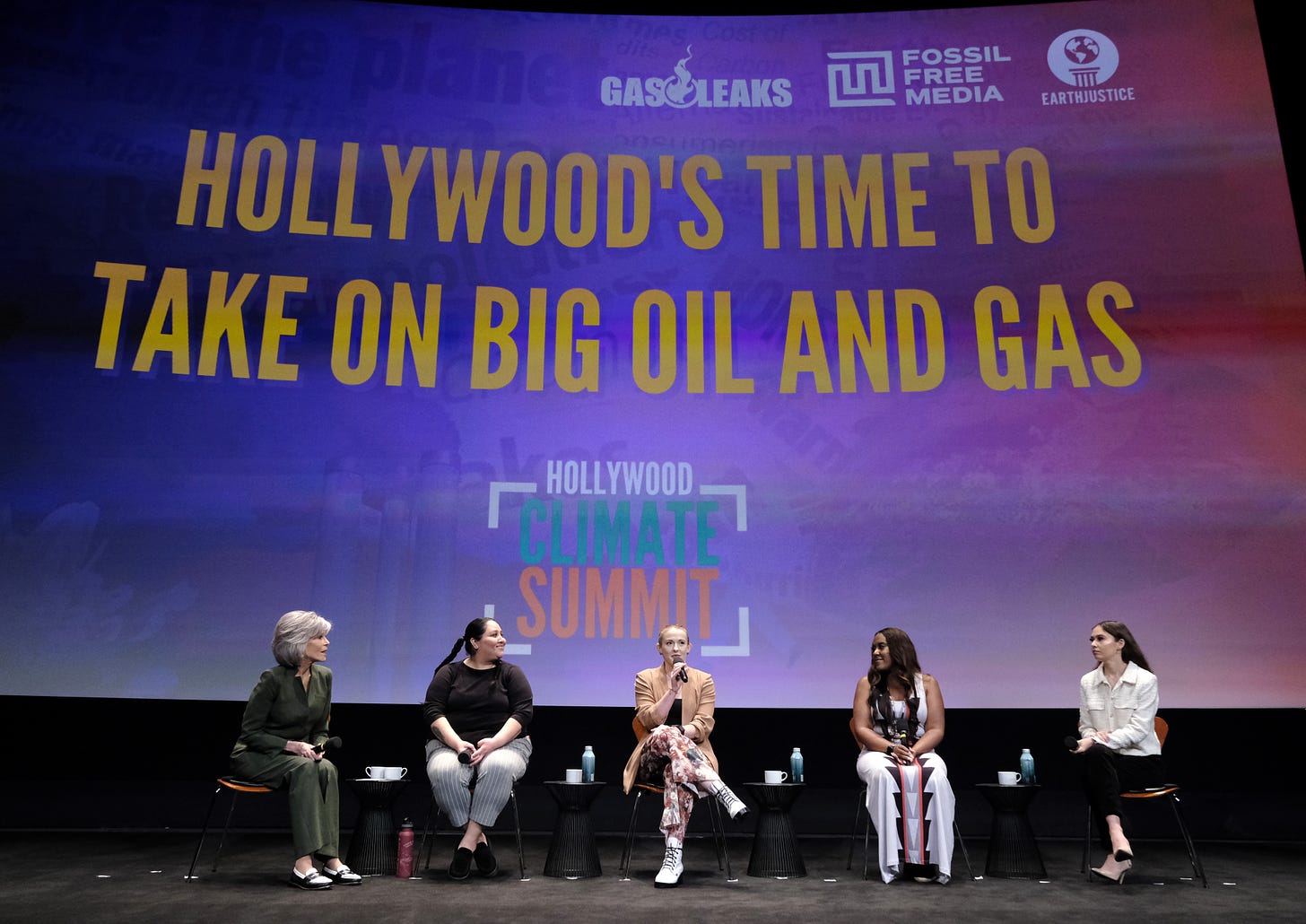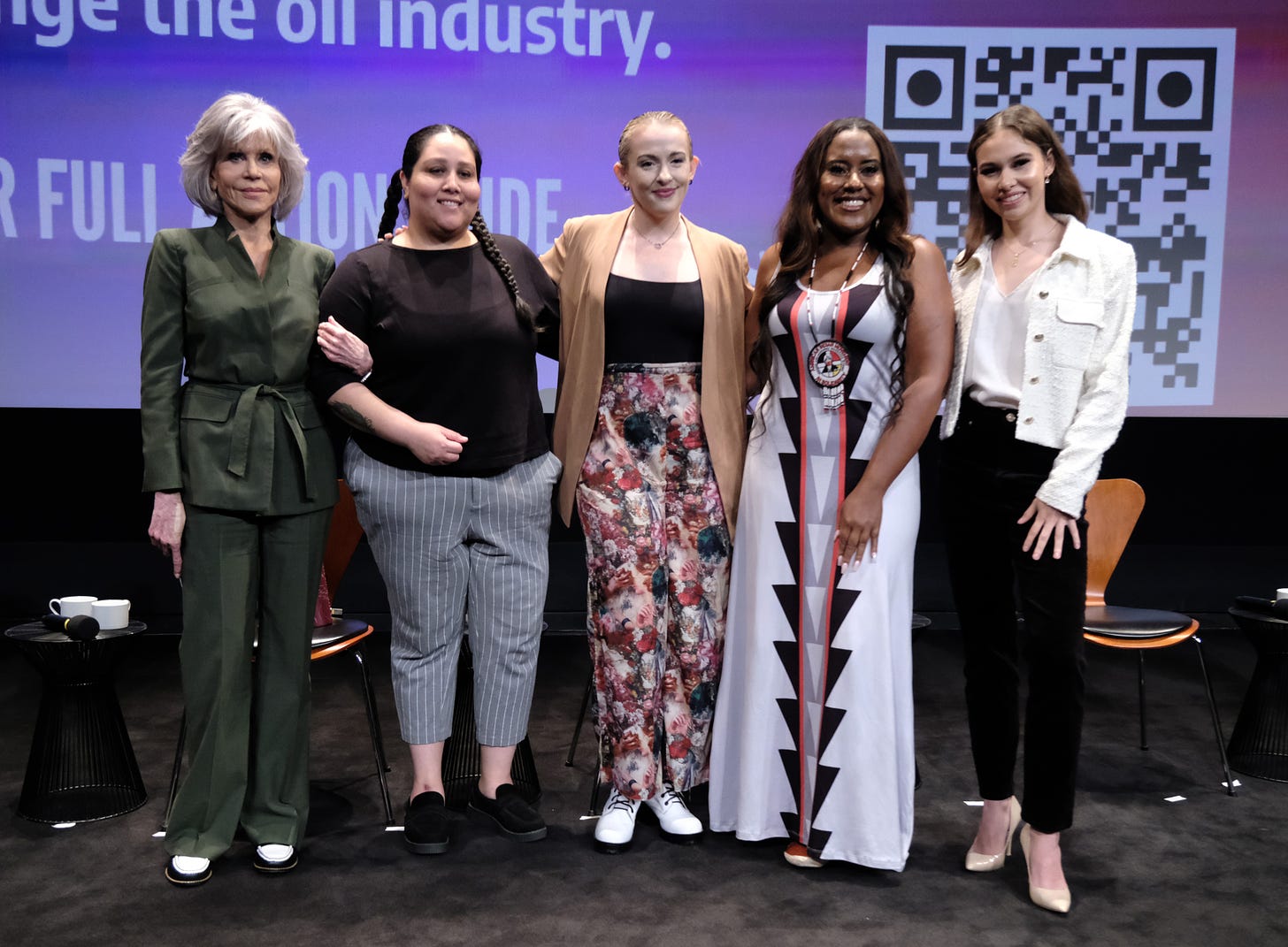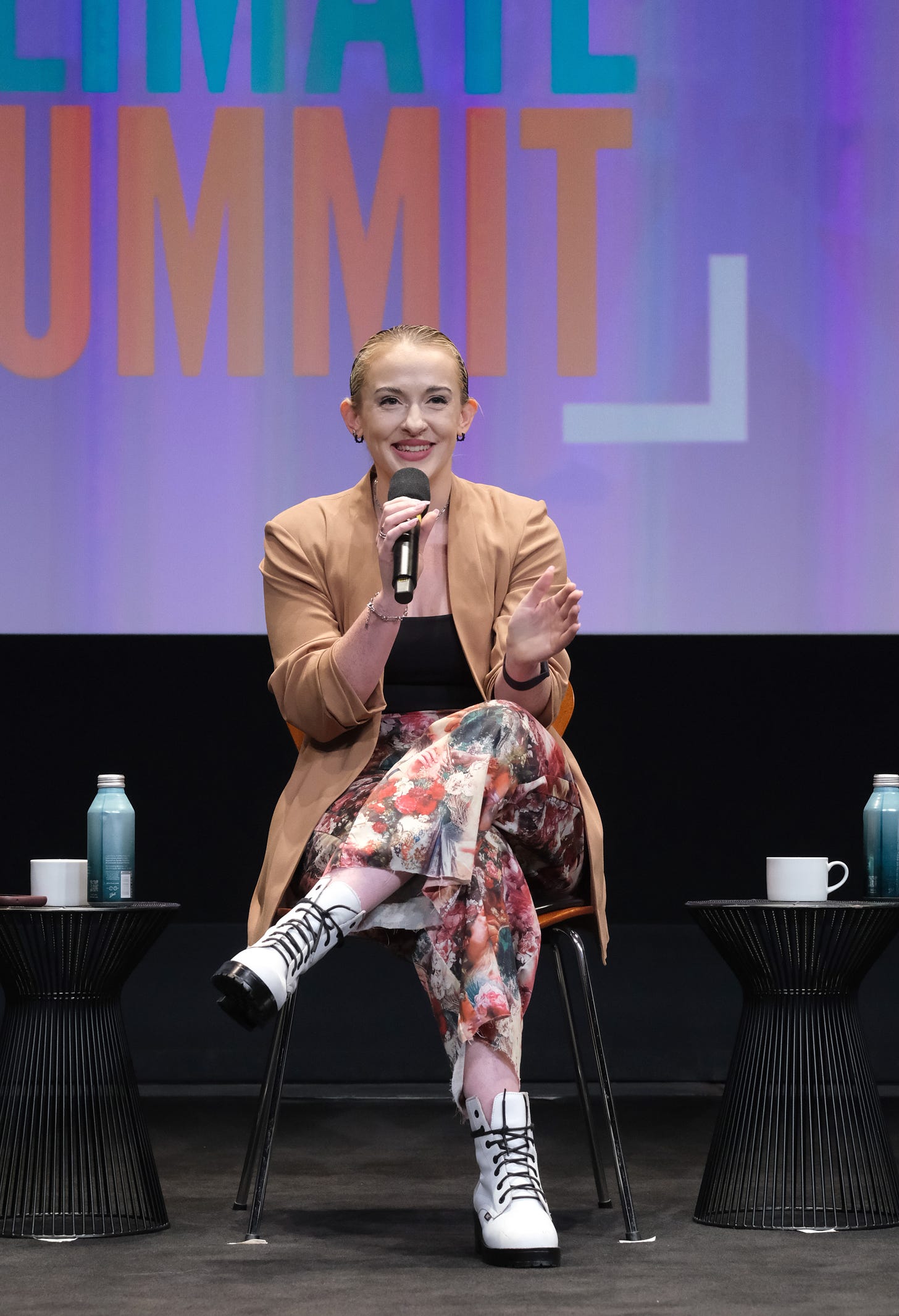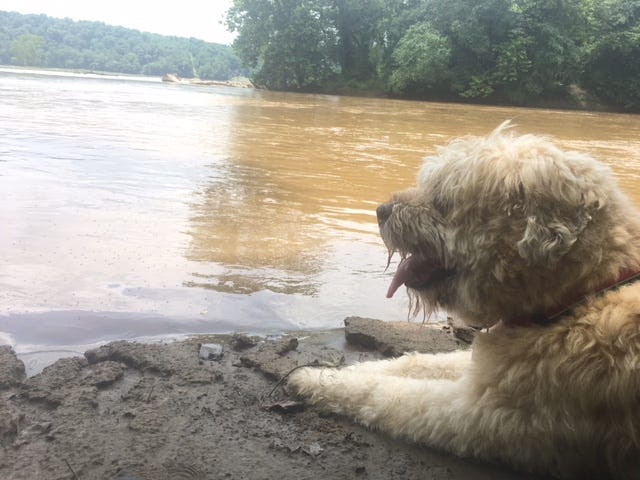HEATED goes to Hollywood
In our most high-profile event to date, Emily joined Jane Fonda and frontline climate activists on stage at the Academy to tell Hollywood writers to step up their game.

A few years back, in the depths of quarantine, I started taking drum lessons. I didn’t do it because I wanted to become a great drummer. I did it because I was feeling bad, and I thought beating the crap out of some stuff to music would help.
This was the first time in my life I had taken up a hobby primarily for self-fulfillment. In the past, when I’d taken up any regular practice outside of work, it was mainly because I was also trying to “optimize” myself somehow: usually my career, my body, or my social status.
But this new approach, in which I decided to regularly do something that made me feel good without the pressures of chasing external success, gave me a lot of internal joy. And it started me on a path toward deprogramming a long-held belief I didn’t even realize I had: that unless you plan to become the best at something, that thing is not worth doing.
I recently talked about this belief on stage at the Academy of Motion Pictures Arts and Sciences, where I was invited to speak alongside a panel of extremely impressive frontline climate activists about how Hollywood creators can tell more effective stories about climate change and fossil fuels.
My general message: Don’t approach climate storytelling with the mindset that “it’s only worth doing if I can create massive, tangible change”—because climate change does not lend itself to that type of thinking. Instead, approach climate storytelling and activism with the mindset of, “This is worth doing because I care about the planet, and it makes my soul feel good to do some work on its behalf.”
If that was the only revelation I got to share with the audience of the 2023 Hollywood Climate Summit, I would have been happy. But fortunately, I was also able to give some wide-lens context to the personal, often heart-wrenching, stories being told on stage beside me.
At my panel, titled “Hollywood’s Time to Take on Big Oil and Gas,” the audience heard from Nalleli Cobo, who led her community to force out an oil drilling project that left her seriously ill. They heard from YoNasDa Lonewolf, an Atlanta-based Black and Oglala Lakota water protector, who recounted her experiences with racism while protesting at Standing Rock. They also heard from Sylvia Arredondo, an organizer with Communities for a Better Environment, who detailed the oil industry’s $20 million fight to ensure drilling projects could remain next to California schools and homes. (You can find the video of the entire panel on YouTube here).
After listening to all their stories, the point I wanted to make to the audience was clear: If you can’t find compelling climate narratives to tell, it’s obvious you’re not looking hard enough.
I was also grateful to get the opportunity to discuss the danger of fossil fuel propaganda and delay tactics, particularly when it comes to methane gas. That’s one of the main things this newsletter was created to do, and I’m not sure how often Hollywood creators get to hear it.
On a personal note, this was probably the most high-profile event I’ve spoken at in my climate journalism career. The panel—moderated by actress and climate activist Jane Fonda— was covered by the Hollywood Reporter, the Evening Standard, France24, AFP, and even our right-wing pals over at Breitbart News and the Daily Mail.
We even got some fancy Getty Images. I mean, just look at these:
Fancy photos and celebrity cameos aside, I do think there is something invaluable about being able to talk about the value of climate storytelling in the wild; to, every so often, get off the internet and make the points I try to raise in this newsletter face-to-face with people who care about the planet.
This is one of the things our paid subscriber community funds—not just our ability to do climate journalism, but our ability to attend events like these, and bring our journalism to people who might not otherwise find it. If you value our ability to do that, I hope you’ll consider supporting us.
And one more thing: the Hollywood Climate Summit didn’t just learn from us. We learned from it, too.
Here’s Arielle on that point:
What else happened in Hollywood?
Hollywood has a powerful influence on how we see the world because stories can alter our feelings, our beliefs, and even our brain chemistry. So I found it hopeful to see so many producers, writers, and creators talking about how to better incorporate climate change in their films, both on and off set. Here are some of the highlights:
Apocalypse narratives are out. Data-driven narratives are in. Hollywood climate movies usually come in one of two flavors: apocalypse style, like Mad Max: Fury Road and The Day After Tomorrow (favorites of mine), or some variation of Everything is Still The Same, but We All Have Electric Cars Now. But the Probable Futures team came to Hollywood to show filmmakers that, in reality, our climate future is probably somewhere in-between those two extremes—and there is a lot of opportunity for creativity within that nuance. Probable Futures featured detailed visualizations of how the climate is changing on a local level—you can look up where you live—and told stories illustrating what that change looks like in real time. I highly recommend checking them out.
Reality TV is starting to incorporate climate. A fantastic panel highlighted how Hollywood can incorporate sustainability more naturally, from using induction stoves in cooking shows to using renewable energy instead of gas generators on film sets (did you know that Inception was shot with solar power?). But one of the most impactful takeaways for me was hearing from Andraéa LaVant, a disability inclusion expert and producer of the 2021 documentary Crip Camp. LaVant pointed out that sustainable solutions,like walkable cities and paper straws, can often leave out the needs of people with disabilities. “Sustainability is about designing for all,” she said.
The TikTokers making climate trendy: We brushed up our TikTok skills with the talented team at EcoTok Collective. A key message from the Gen Zers: Most traditional media doesn’t represent their diversity, and tends to talk down to younger audiences. To fill the gap, influencers like the EcoTok team are using social media to diversify and equalize environmentalism. If you’re looking for people to follow, here’s a few TikToks to get you started: @queerbrownvegan, @eco.og, @trashcaulin, @browngirlgreen.
Catch of the day: Bertie loves to explore the Susquehanna River and watch the fish jump and the eagles fish, says reader Pamela. That mud looks nice and cool Bertie!
Want to see your furry (or non-furry!) friend in HEATED? It might take a little while, but we WILL get to yours eventually! Just send a picture and some words to catchoftheday@heated.world.







This is fantastic! Thank you for representing and sharing your expertise. Love the message that we tell these stories because we love the earth. The added pressure of engendering massive change with every story is paralyzing. I’ve been working on a story of methane, Marcellus fracking and an asthmatic climate scientist. This motivates me to just get it the f out there already!
You know you've made the big time when you're appearing in fancy Getty Images. Congrats.